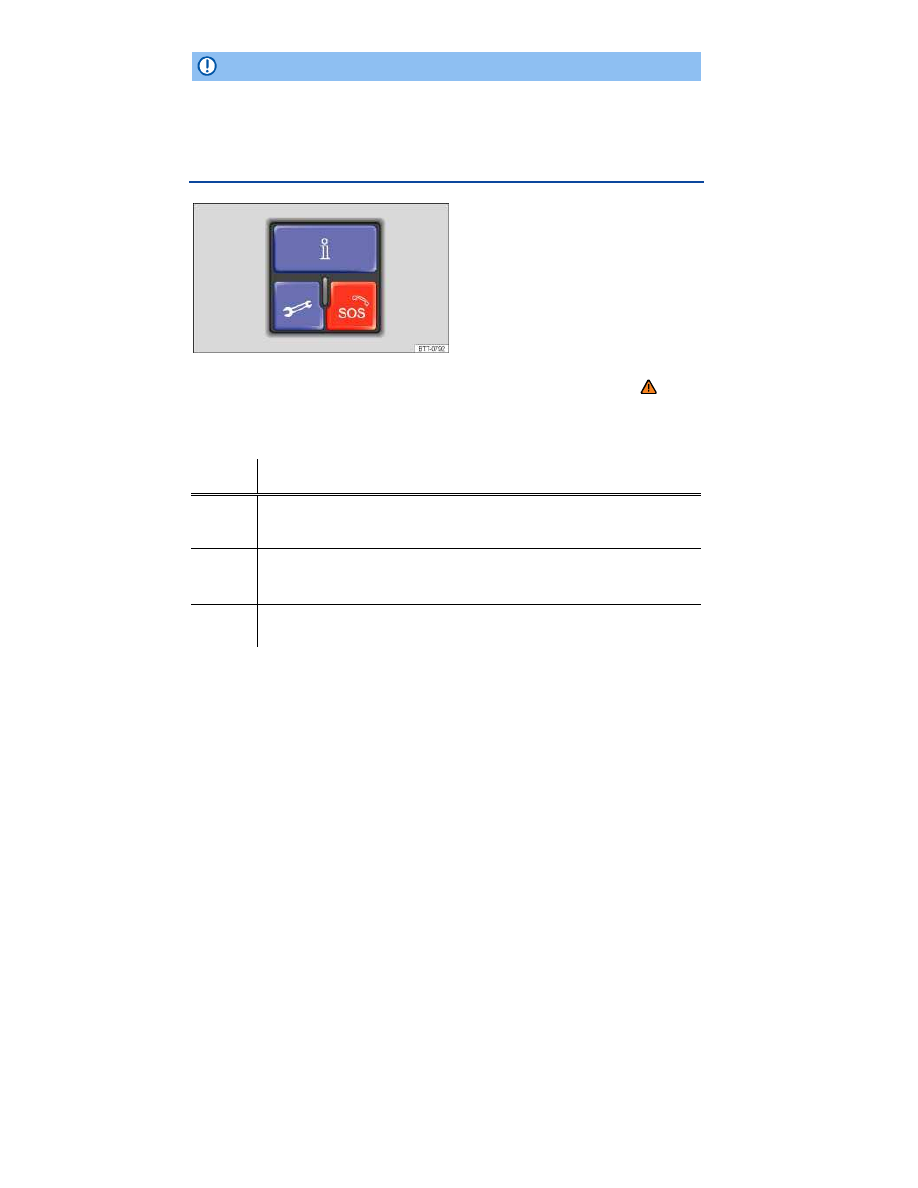Volkswagen EOS (2015 year). Instruction - part 3

NOTICE
Volkswagen is not responsible for vehicle damage caused by inferior-quality or malicious
application software, poorly programmed application software, insufficient wireless service
reception, data loss during transmission or misuse of mobile devices.
3-button module
Fig. 16 In the roof console: 3-button module to access Volkswagen Car-Net service operators
Please first read and note the introductory information and heed the WARNINGS
The buttons in the 3-button module provide access to several Volkswagen Car-Net features and
pressing a button will initiate a connection to the Volkswagen Car-Net Response Center. Calls may be
monitored or recorded. In general, the Volkswagen Car-Net Customer Specialist will end the call.
⇒
fig. 16
Function
•
Press and hold for longer than 2 seconds: Connects to the Volkswagen Car-Net
Response Center and a Volkswagen Car-Net Customer Specialist.
Press again: End the call.
Press and hold for longer than 2 seconds: Assistance in the event of a breakdown by
connecting to the Volkswagen Roadside Provider.
Press again: End the call.
•
Press and hold for longer than 2 seconds: Activate emergency call.
Press again: End the call.
LED light in the 3-button module
The LED light in the 3-button module will be green during the trial period and whenever you have an
active subscription. The LED light will go off if the trial period is over and the customer has not
subscribed to the Volkswagen Car-Net Services. The LED light will be red only during a VW Car-Net
hardware malfunction or fault.